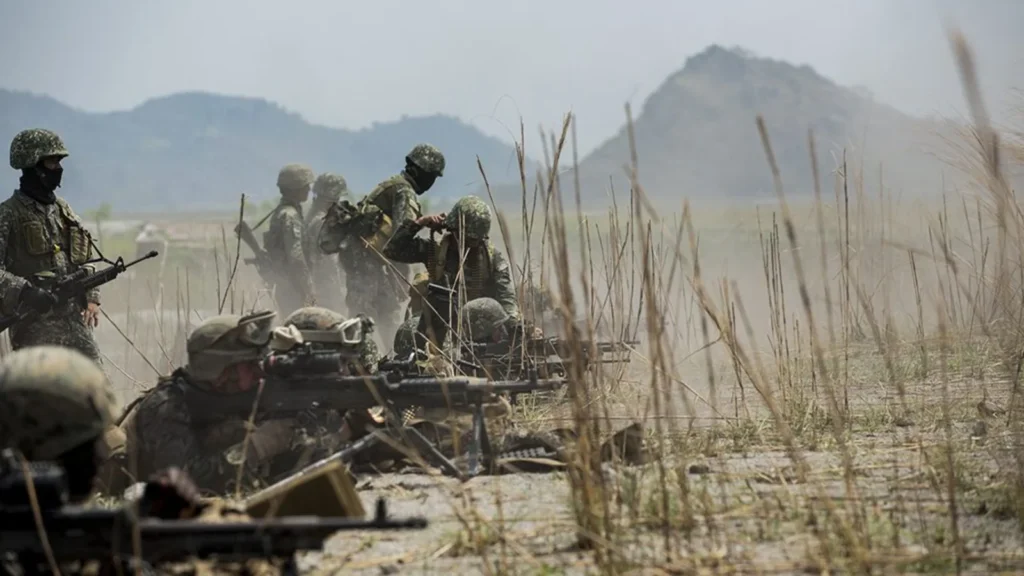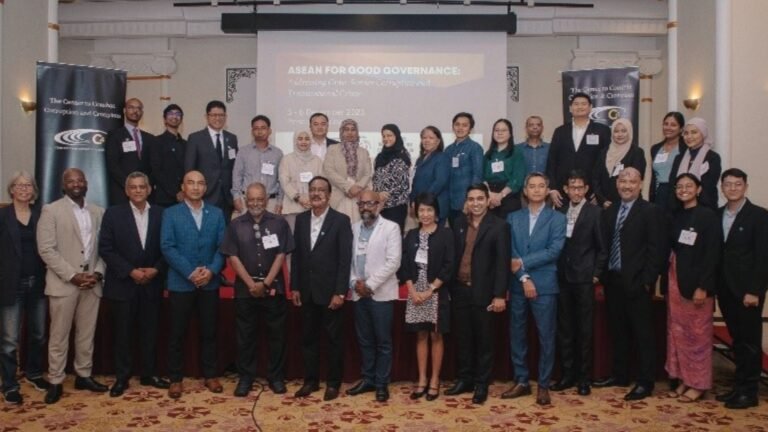Mindanao, sometimes referred to as the Southern Philippines, has suffered decades of internal conflict. The reasons behind this are multi-layered, multi-faceted and defy simple explanation. Separatist insurgencies, private armies, militias, civilian defense forces, and criminal gangs are very much part of the complicated demography of the conflict landscape of the region. Mindanao plays host to numerous armed groups each containing different factions and splinter groups, complicating the picture further.
Armed conflicts are among the most devastating social phenomena in the world. It is difficult to deny the connection between armed conflict and underdevelopment (Nygård & Urdal, 2015). Aside from direct death and injury, numerous adverse consequences such as population displacement, economic degradation, the erosion of important public systems and the undermining of social trust, incumber development efforts (Hegre, 2013). Further compounding instability in the region, is the cultural prevalence of rido, or clan feuding, perhaps the most intractable source of conflict in Mindanao.
Rido is deeply entrenched cultural phenomenon in the southern Philippines. Feuding clans have not only resulted in considerable numbers of direct casualties, but also work to supplement the pervasive state of regional insecurity. Rido refers to “a state of recurring hostilities between families and kinship groups characterized by a series of retaliatory acts of violence carried out to avenge a perceived affront or injustice” (Torres, 2014: 4).
While these conflicts can sometimes be triggered by something trivial, they are often exacerbated by historical grievances and rivalries dating back generations. These feuds may involve a number of different clans, or sometimes, they may even be waged within clans, tearing families apart. Most commonly, the sources of conflict emanate from political office, land disputes and issues of honour and resources (Buchanan, 2011). Instances of rido are high when political posts are at stake. The revenues generated from securing political positions and cornering economic resources, can be used to hire clan members to serve in the private armies of clan leaders, both for protection, and to expand their clan’s (and leader’s) influence (Adriano & Parks, 2003: 74).
While certainly more recent examples exist, the infamous ‘Maguindanao massacre’ of August 2009 displays the situation well. A large force of around 100 gunmen intercepted a convoy of family members and supporters of Buluan vice-mayor Esmael Mangudadatu, a member of a prominent local clan, who was challenging Datu Unsay mayor Andal Ampatuan Jr., son of the incumbent Maguindanao governor Andal Ampatuan Sr., a member of one of Mindanao’s leading clans. Fifty-eight people were killed including Mangudadatu’s wife, his two sisters, journalists, lawyers, aides, and other motorists who were witnesses or were mistakenly identified as part of the convoy (Mercado et al., 2010). The bodies were found buried in a shallow grave on the outskirts of a neighbouring town.
Clan loyalties have 3 implications for conflict dynamics: 1) building social capital bridges between clans is extremely challenging, 2) conflict seems chaotic at the macro level, but understandable and predictable at the local level, 3) conflict should be understood (usually) as a product of local contestation and politics, rather than a broad struggle against the state (ibid: 22).
A survey conducted by the Asia Foundation found that residents in the Autonomous Region of Muslim Mindanao overwhelmingly cited ethnicity over religion as the most important factor in their identity (ibid). As a consequence of the primacy of clan and ethnic identities, a clan feud can potentially unravel into clashes involving various armed groups, the police and the army.

Mindanao Total Area – https://www.philatlas.com/mindanao.html
Rido has wider implications in the context of Mindanao, due to the tendency to interact with separatist groups. There have been many armed confrontations involving separatist groups and the military that were actually initiated by a local rido (Torres, 2014). One notable example involved a 21-year-old feud between the Mangansakan and Tayuan families. As the Tayuan family contained Moro National Liberation Front commanders (a prominent separatist group) the Mangansakan family asked for help from the Philippine Armed Forces. This exacerbated the conflict resulting in numerous casualties and the displacement of more than 3000 families across 4 municipalities (Torres, 2007). Such hostilities underscore the potential of local feuds and third-party actors to contribute to the environment of conflict.
Rido regularly intersects through alliances of convenience, or through members of a clan or armed group engaging in clan, criminal or terrorist acts on their own. There is substantial fluidity between actors, with individuals moving between armed groups, to criminal networks to the armed forces (Buchanan, 2011: 13). Weak public security and the notorious lack of democratic practices in Mindanao has worked to undermine the credibility of the local and national authorities, and forced residents to rely on their clans to enforce their rights (ibid). This has only served to reinforce the importance of clan-based loyalties, and in turn the potential participation in rido.
Sultan Abdul Hamidullah Atar of Marawi, a community leader and active conflict mediator who also heads the NGO Reconciliatory Initiatives for Development Opportunities (RIDO) outlined the connection between people’s entanglement in rido and participation in armed groups:
“If your family is involved in rido, what can you do? If you are young it can be very dangerous, you are vulnerable. You do not go to school. You learn to fight, you learn how to handle weapons… you cannot go to school or university, if they (the other clan) see you, then you are in trouble. Then what? How can you find a job with no education, when you are hunted by both another clan and the police for rido? Not possible… You learn to become a fighter and only this… you can join a group and become a fighter or a crimnal.”
Sultan Hamidullah Atar – Fieldnotes, 23 May 2019.
The conditions described above are well documented: “In a rido-plagued hamlet, one man eloquently recounted how decades of clan conflict had forced him to leave school and, most recently, his employment as a fisherman when he and his brothers became targets of revenge” (Dwyer, 2019:20).
The culture of rido and revenge seeking cannot be underplayed. A 2018 USAid ENGAGE study found that 40% of respondents thought violence acceptable as a tool for rectification if a family member was hurt or killed, this figure increased to 42% (46% among internally displaced persons – IDPs) relating to theft of personal犀利士
property and 43% (47% among IDPs) in situations where the family name was considered to be dishonoured.
The wide-ranging repercussions of rido have not been full犀利士
y explored in relation to other conflicts in Mindanao. Certainly, an armed group may seem like an attractive option to someone capable of little else under the circumstances. While it is difficult to find anything more than a mention in most of the literature on the subject, combatting rido, not just for the sake of itself, but as a more direct means to impede recruitment into other armed groups, should be considered as an important area for further peace development research and also for government or international actor intervention.
Bibliography
Adriano F. & Parks T. (2013) The Contested Corners of Asia: The Case of Mindanao, Philippines. San Francisco: The Asia Foundation.
Buchanan C. (2011) Armed Violence in Mindanao: Militia and private armies. The Institute of Bangsamoro Studies and the Centre for Humanitarian Dialogue.
Damiani M. (2019) Child and Youth Participation in Armed Groups in Mindanao, Southern Philippines: Thorny pathways between adverse demographic factors and prolonged cultural conflict. RUC MSc Thesis – Roskilde University Library.
Dwyer L. (2019) Gender and Conflict in Mindanao. The Asia Foundation.
ENGAGE (2018) Testing Assumptions about Governance, Social Cohesion and the Drivers of Extremism – What Matters Most. USAID – ENGAGE Studies.
Hegre H. (2013) Civil Conflict and Development. The Centre for the Study of Civil War. Peace Research Institute Oslo.
Mercado E. R., Ferrer M. C., Santos Jr. S. M., Banlaoi R. C., Lara Jr. F. J. & Husin A. A. (2010) The Maguindanao Massacre and the Rise of Warlord Clans. Institute for Autonomy and Governance – Konrad Adenauer-Stiftung. Autonomy and Peace Review Vol. 6. (1).
Nygård H. M. & Urdal H. (2015) War is Development in Reverse. Peace Research Institute Oslo.
Torres W. M. (2014) Rido: Clan Feuding and Conflict Management in Mindanao. Asia Foundation. Ateneo de Manila University Press.
Featured Image: U.S. Marine Corps photo by Lance Cpl. Cameron Darrough
About the Author: Michael Damiani is a research associate with the IACS. He holds an MSc in International Development and Global Studies from Roskilde University, Denmark








